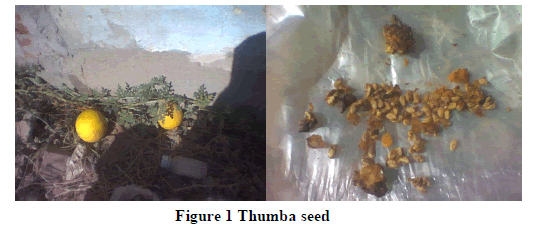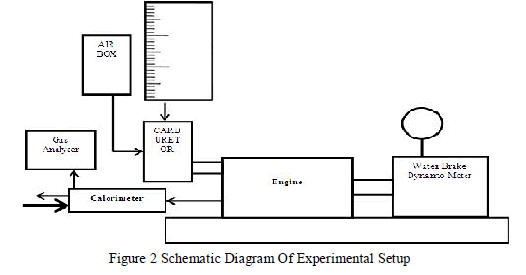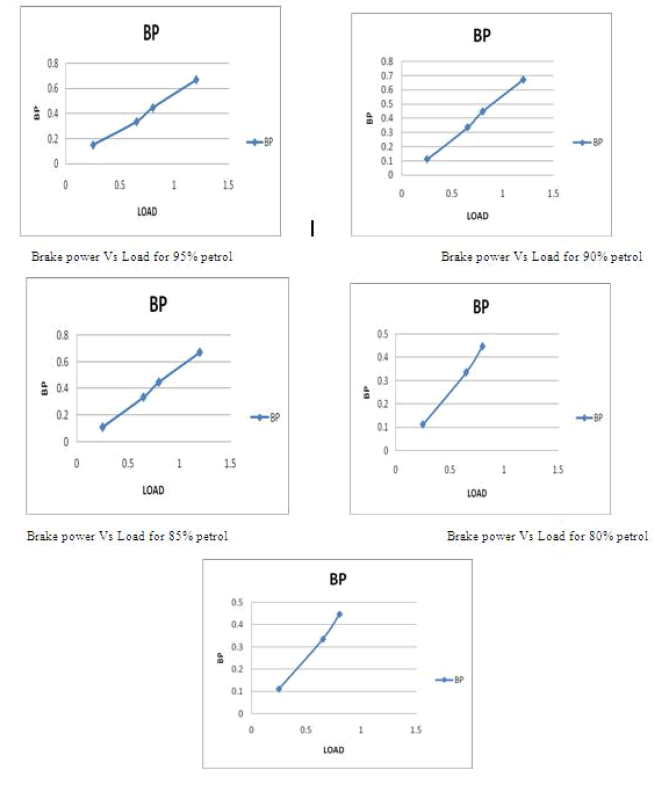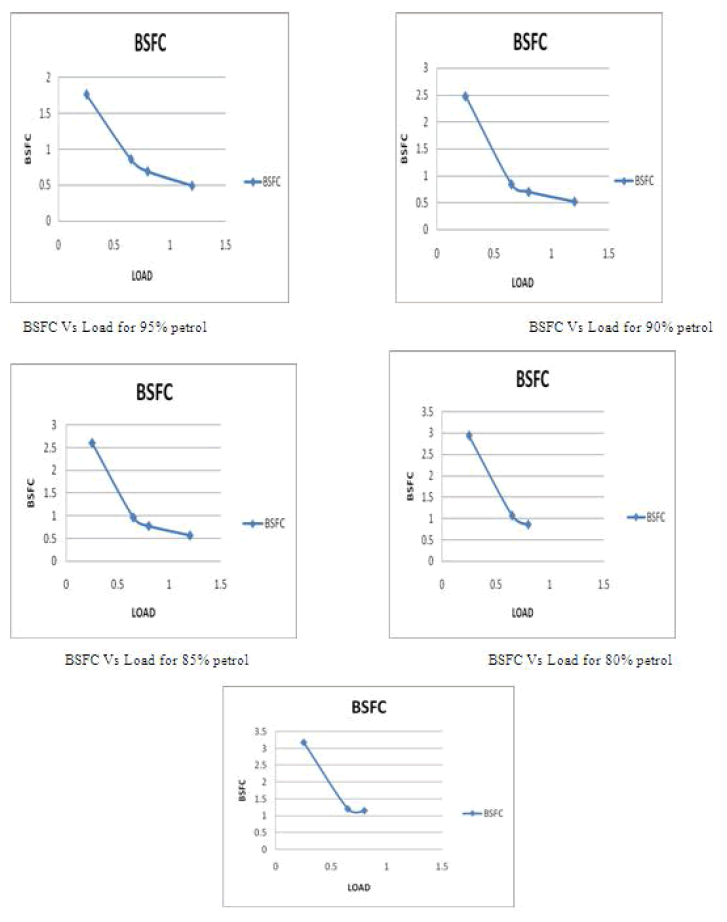ISSN ONLINE(2319-8753)PRINT(2347-6710)
ISSN ONLINE(2319-8753)PRINT(2347-6710)
M.A.Bote 1, H.M.Dange 2
|
| Related article at Pubmed, Scholar Google |
Visit for more related articles at International Journal of Innovative Research in Science, Engineering and Technology
Petroleum based fuels have important role in rapid depletion of fossil fuels as with demand is increasing .For production of biodiesel Thumba oil is used. Biodiesel can be recognised as eco friendly fuel so considering this through the experiment an attempt has been made of Thumba biodiesel blended on SI engine in laboratory and found its properties and characteristics. Various blends of Thumba biodiesel were prepared and its performance was evaluated with single cylinder four stroke petrol engine
Keywords |
| Thumba oil, Biodiesel, Engine testing, blending |
INTRODUCTION |
| To meet the rising energy demand and replace reducing petroleum reserves, fuels such as biodiesel and bio ethanol are in forefront of alternative technologies .Use of biodiesel will allow a balance to be sought between agricultural, economic development and environment. Expert suggested that current oil and gas reserve would sufficient to last only few decades. Therefore in near future as a transportation fuel , bio fuel will play important role in world .Biodiesels are mono alkyl esters of vegetable oils or animal fats .The heating value of biodiesel are slightly less .Research work is available on vegetable oils such as Mahua oil , Jatropha ,Rapeseed ,Mixed vegetable oils and can be used as an alternative fuel. When considered biodiesel as a vehicle fuel there are number of studies are available which mainly concentrate on safety, health and environmental effects. one of the important aspects of biodiesel are non toxic and biodegradable, also low sulphur content so environmental friendly. No engine modification is required. The concept of biodiesel blend is very old. The study of hydrated ethanol with gasoline as a means of reducing the cost of ethanol/gasoline implemented by Suri rajan [1].The blending of ethanol with unleaded gasoline increases brake power, torque, and brake thermal efficiency [2].For single cylinder direct injection diesel engine with blends of rice bran oil the kinematic viscosity decreases with increase in unburnt hydrocarbons[3].The bio additives such as extracted matter of palm oil have been tested with gasoline engine engines which shows that there is increase in improvement of exhaust emission[4]. In [5] experiment attempt has been made to know level of variation of exhaust emission in four cylinder petrol engine by adding methanol in various percentage with gasoline and also doing by slight modification in engine .The author in [6] applied diesel fuel with ethanol in four stroke direct injection diesel engine with different engine speed and at full load conditions. The vegetable oil performance is similar to that obtained with diesel oil as per experiment carried out by researcher [8] Paper is organised as follows .Section II describes occurrence of Thumba oil with its properties, also conversion of Thumba oil into its biodiesel with transesterification process. The biodiesel prepared with blends of petrol have been analysed with single cylinder four stroke petrol engine which is focussed in Section III. Section IV represents experimental results with graph analysis. Finally Section V represents conclusion. |
II. EXPERIMENTAL MATERIALS |
| The Thumba oil is non edible (Fig 1) .The scientific name is Citrullus Colocyntis. It is native of turkey and found in Asia and Africa. In India it manly grows in rain fed part of Rajasthan & Gujarat .Its occurrence is generally in sandy oil .The seed contains only 21% of oil, pale brownish yellow in colour with bitter taste. The plant mainly used as cattle feed by farmers. It is also used as laxative, anti inflammatory drug and in local soap industries. The small crop cycle and various use of Thumba oil play a vital role for the progress of Indian rural economy. |
 |
| The by products as like oil cake and glycerol have very good commercial value which can reduce the cost of biodiesel .This biodiesel have most suitable species due to their favourable characteristics like small crop cycle, high oil recovery and quality of oil. Biodiesel is produced by transesterification process which consists of batch reactor and reflux condenser, thermometer and stirrer. Methanol and potassium hydroxide have been added to oil which is kept in reactor in separate funnel mixture was collected and glycerol layer was removed which is formed on surface of mixture. The mixture is washed with Luke warm water with removal of methyl ester and it is allowed to heat for some time in open vessel. |
III. EXPERIMENTAL WORK |
| The experiment was carried out at constant speed and varying load conditions on single cylinder four stroke petrol engine model Bajaj rickshaw which is coupled to hydraulic dynamometer for loading purpose .The engine is air cooled with 173 cc displacement giving maximum power 8.17 bhp. The speed is kept constant 1500 rpm .The flow rate is constant .The load is increased as 0.2, 0.6, 0.8 and 1.2 kg respectively. Necessary instruments as like manometer, fuel measuring unit, stop watch, air box, tachometer equipped with set up .The exhaust gas calorimeter and rota meter used for measurement of temp and water flow respectively. During blending mode blends are taken as B05 means 95 % petrol and 5 % of Thumba oil, likewise B10, B15, B20, B25 etc. and effect on Brake power and Brake specific fuel consumption have been analysed. |
 |
IV. RESULTS AND DISCUSSIONS |
| The variation of brake power with respect to load for blends (B05, B10, B15, B20, and B25) is presented in Figure 3. Brake power Vs load graph indicates that brake power increases simultaneously for load 0 to 1.2 kg for various blends such as (B05, B10, B15, B20, and B25) . The speed is kept constant for all the blends. For all cases BSFC Vs load graph indicates that as load increases from 0.2 to 1.2 kg, BSFC drops simultaneously. Here also the speed is kept constant. For (B 05) The BSFC decreases down from 1.764 to 0.494 as it was 1.764 for 0.2 load and for highest load it was 0.494, Same for ( B10) the BSFC decreases from 2.48 to 0.52 for the load 0.2 to 1.2 kg .Thus as for other blends BSFC drops down significantly . |
 |
 |
V. CONCLUSION |
| The brake specific fuel consumption for Thumba biodiesel blend with petrol was higher than pure petrol because of lower calorific value and delay in ignition process. It is also observed that at constant speed as load increases there is increase in brake thermal efficiency for petrol and for all blends of Thumba oil |
References |
|